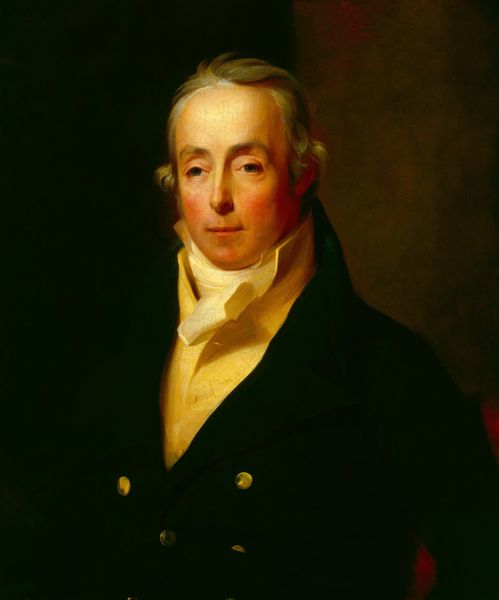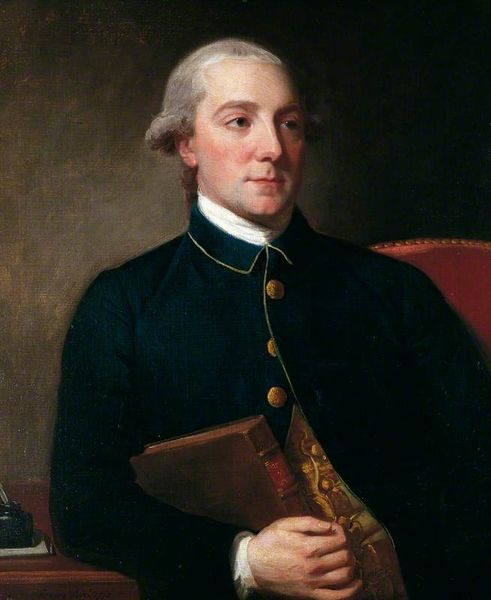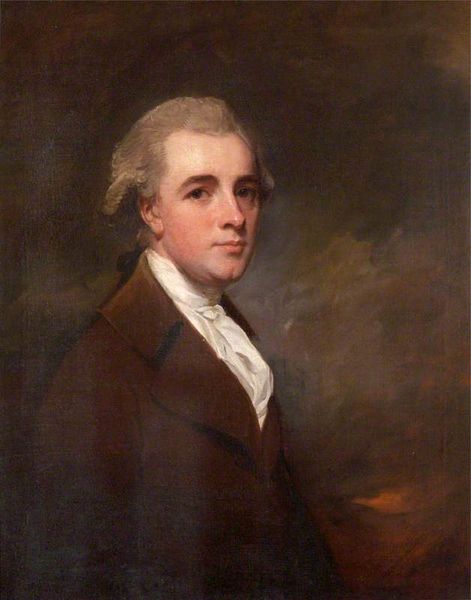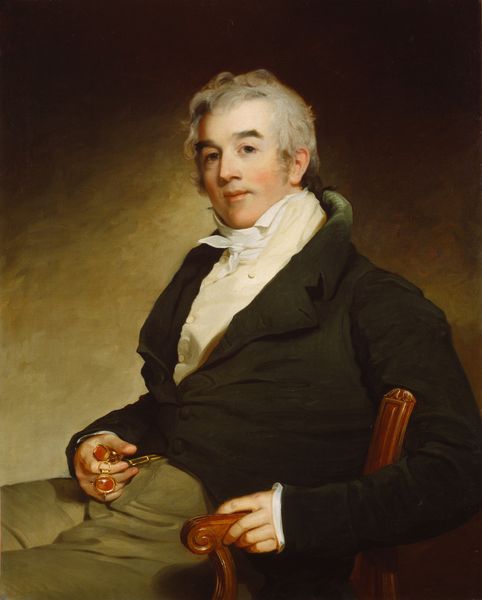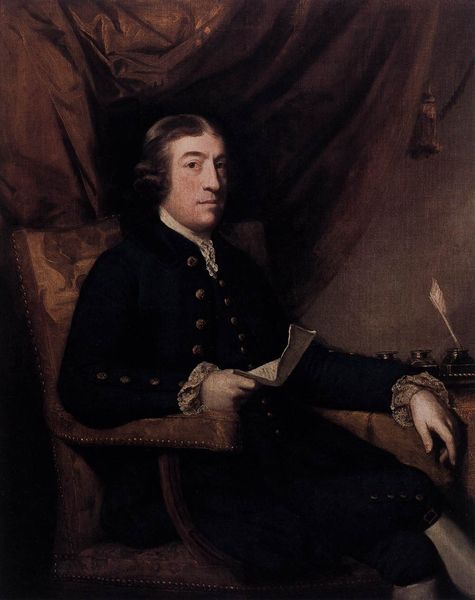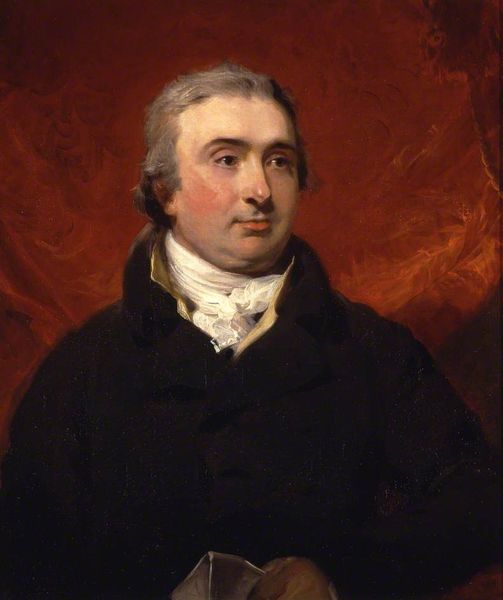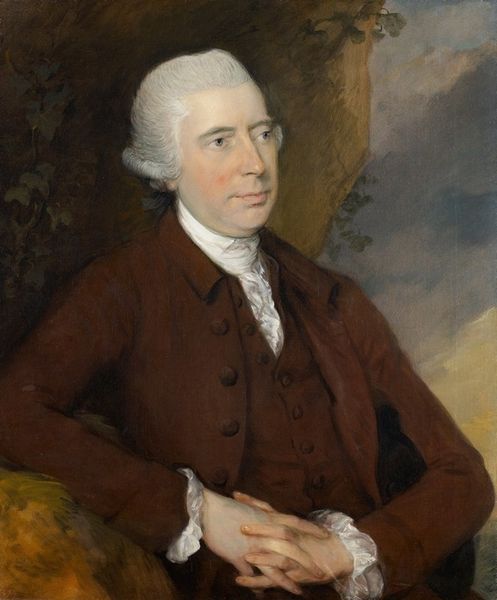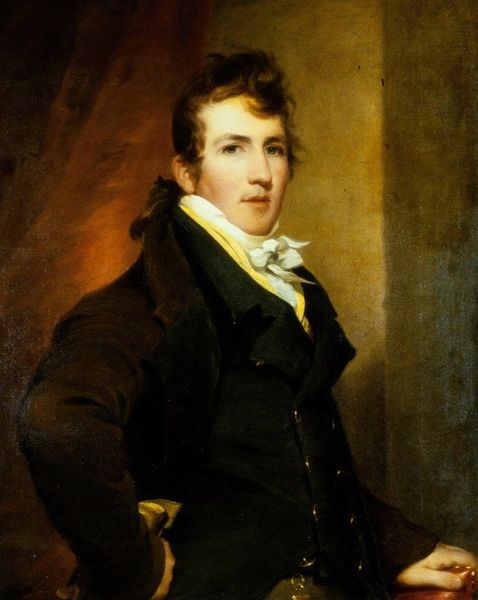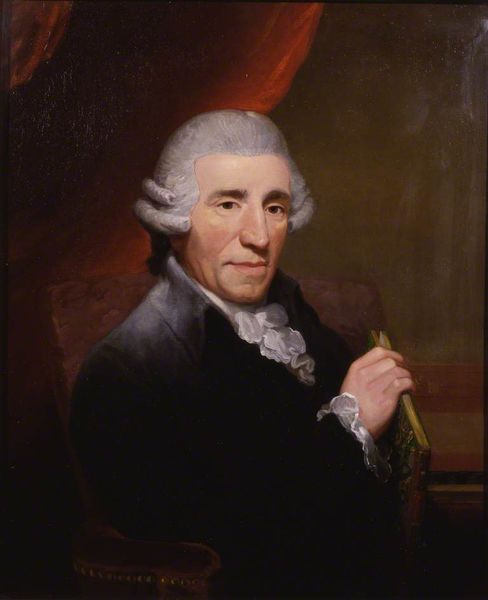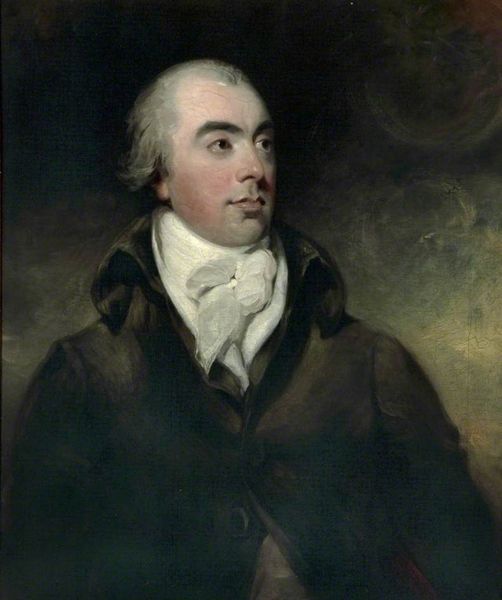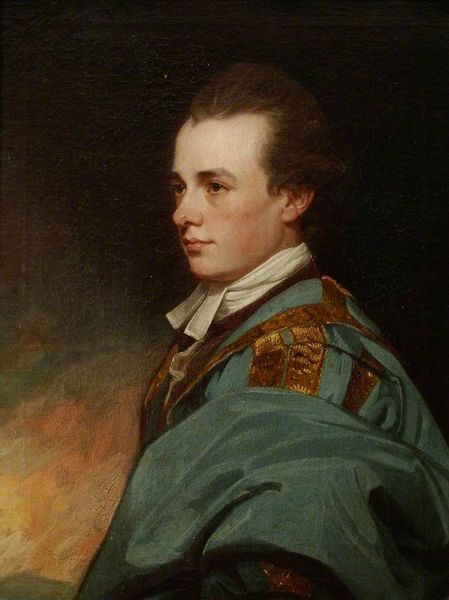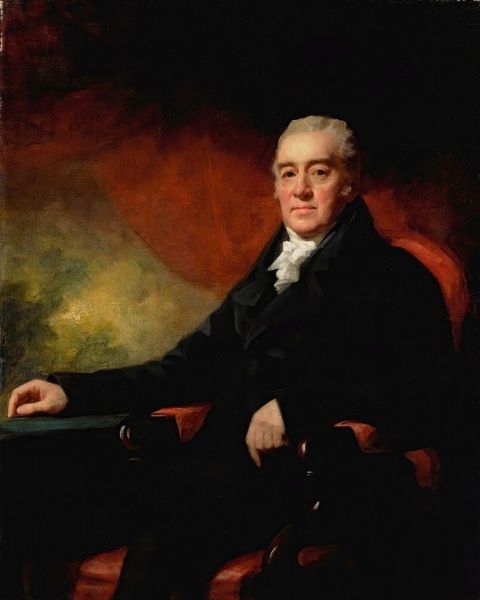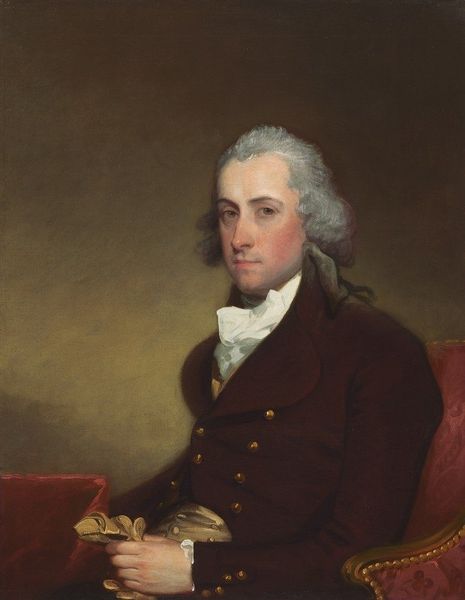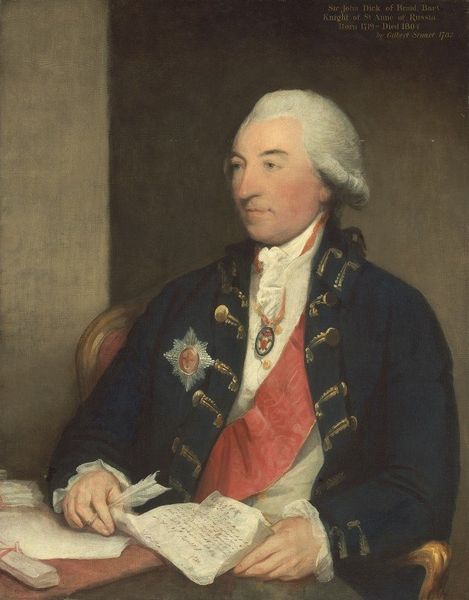
painting, oil-paint
#
neoclacissism
#
portrait image
#
portrait
#
painting
#
oil-paint
#
portrait reference
#
portrait head and shoulder
#
portrait drawing
#
history-painting
#
facial portrait
#
portrait art
#
fine art portrait
#
celebrity portrait
#
digital portrait
Copyright: Public domain
Curator: Standing before us is a portrait identified as William Wilberforce by John Russell. Wilberforce, known for his pivotal role in the abolition of the slave trade in Britain, appears here, in a formal pose typical of Neoclassical portraiture. Editor: My first thought is how reserved the image feels, especially for someone celebrated for such passionate convictions. It’s rendered with incredible restraint, focused primarily on his face. Curator: Indeed, the muted color palette reinforces a sense of solemnity. Note how the rolled document in his hand could represent the weight of parliamentary debates or perhaps the culmination of legislative victory against slavery. It serves as both a symbol of his achievements and his dedication. Editor: I find myself wondering about the materials used here. You can see the texture of the oil paint in his clothing – that dark frock coat must have required layer upon layer of pigment to achieve that depth of color. And how that affected its perceived status; how readily available were the pigments at the time? Curator: The somber coloration directs our attention to the subject's face, to discern his inner character and intentions. The face displays clarity with rosy cheeks perhaps pointing at his youthful dedication. In this portrait, Russell captured a symbol of virtue, of moral strength. Editor: Thinking about this as an object, though, how many layers of varnish were applied to that canvas? Was it a commissioned piece or done independently, to be shopped around for patronage? How did that economic transaction play into the symbolism it ended up conveying? Curator: Perhaps that sense of restraint adds to his stature as someone rising above the clamor of societal debates? As a visual representation, it allows later viewers to remember him as both a political reformer and as a religious man who felt obligated to enact his faith. Editor: It definitely underscores the role of portraiture in crafting reputation – but I'm still drawn to the physicality. How each carefully applied brushstroke contributes not only to the image of Wilberforce, but to the image of the societal values he would come to represent through visual reproduction. Curator: That is, I suppose, the beauty of visual representations in general – it provides an entry point, to explore the social structures that contribute to both subject and object’s overall presence. Editor: Exactly. Even in a restrained image, understanding its creation highlights the intricate material networks through which we construct meaning.
Comments
No comments
Be the first to comment and join the conversation on the ultimate creative platform.
